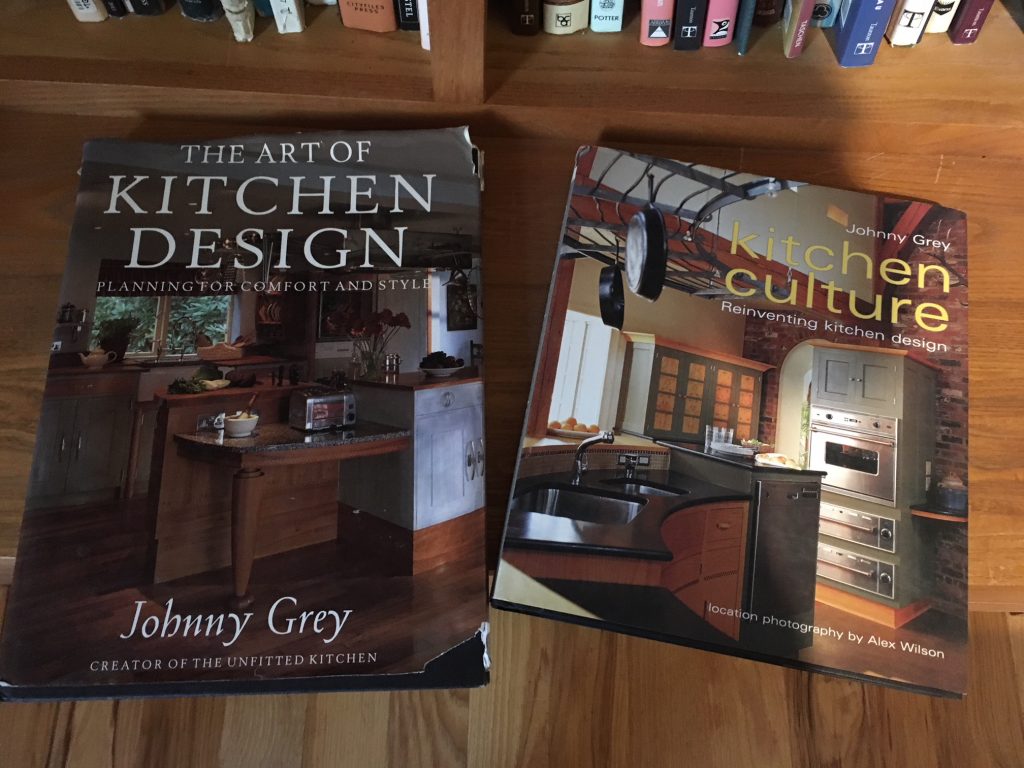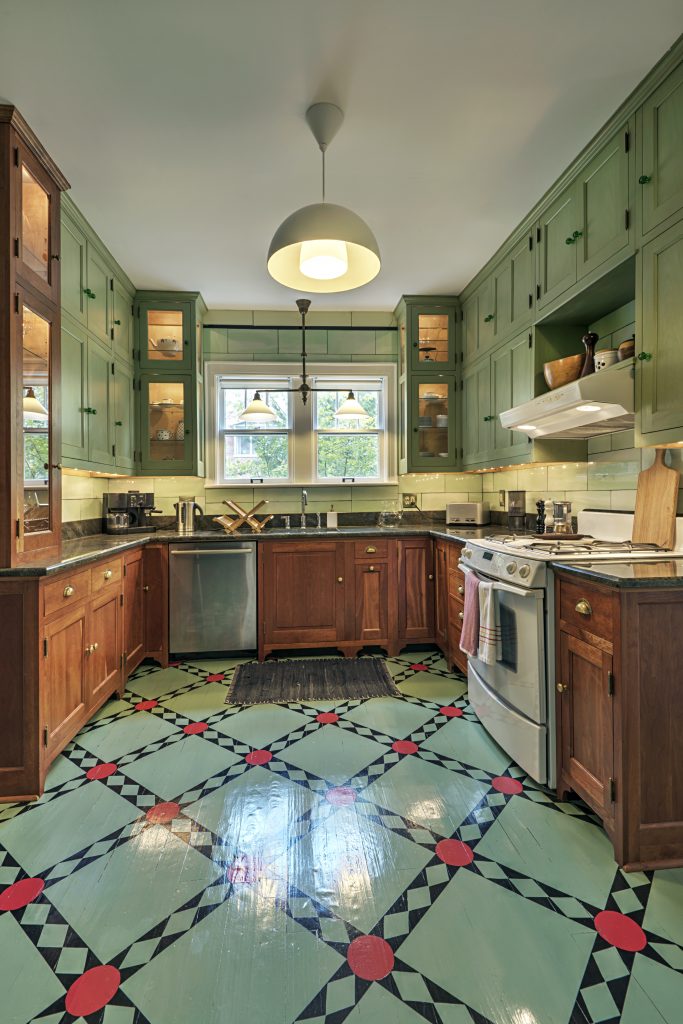We may receive a commission when you use our affiliate links. However, this does not impact our recommendations.

One of the ironies of fame is that certain aspects of an influential designer’s work will be embraced so widely that the link between design and designer will be broken, at least in the popular consciousness. Such is the case with English designer Johnny Grey.
Grey first came to my notice in 1994, when a fellow furniture maker showed me a copy of the then-newly published book The Art of Kitchen Design. I bought a copy of my own at once. I was struck by Grey’s artful approach, which combines character and playfulness with methodical analysis of how we use our kitchens (and how we could be using them better). His beautifully illustrated argument that the kitchen should be returned to its historical status as the heart of the home after some 200 years of relegation to use by servants, then housewives, was an important contribution to the field.*
He also had the great good fortune to have one of England’s most celebrated cookery writers, Elizabeth David, as an aunt, and grew up with her example; as someone whose mother was a serious fan of David’s work, I understand that this detail of Grey’s family history helps account for his passionate interest in the kitchen, as well as his readiness to dispense with convention.
Grey may be best known as the originator of the unfitted kitchen–a perspective on kitchen design based on his observation that kitchens have historically been furnished–literally–with freestanding pieces, not filled with wall-to-wall cabinets. Although many of Grey’s kitchens do feature built-in cabinetry, he certainly broke with the convention that everything had to match.
His kitchen furnishings typically mix paint and natural wood; they also incorporate decorative carving, inlay, and other fabulous (I am using the word in its literal sense) detail. Here is where you’ve probably seen echoes of Grey’s inspiration amid the cabinet displays of many a big-box home store. (Unfortunately, most of those interpreting Grey’s inspiration for the mass market got only the part about mixing materials and finishes and didn’t bother with the underlying principles.)
Another widespread design element that I believe originated with Grey is the arc pull, similar to those used in many of the kitchens in The Art of Kitchen Design.

Arc door and drawer pull (Source here)
These have largely been supplanted by the near-ubiquitous bar pull, but they reigned supreme for many years. I thought of Grey every time I saw them.
Familiarize yourself with Grey’s body of work and you, too, will start seeing echoes of his designs. These are but two. I find his work brilliant and inspiring–in fact, so much that I interviewed him for Fine Homebuilding several years ago. (You can read the interview here. For a more detailed version, see my post at Making Things Work.) Although you won’t see many obvious examples of his inspiration in the kitchens I design, I’ll readily cop to a couple: I sometimes mix finishes, as I did in a 2006 commission for local clients.

A kitchen we did in 2006 combines cabinets finished with a shade of milk paint based on the room’s original Vitrolite tile with base cabinets and one upper that frames the room in cherry. (Cabinetry by NR Hiller Design, Inc. General contractor Golden Hands, Inc. Floor painting by Richard Jenkins. Photo by Kendall Reeves.)
Grey is also largely responsible for my love of plate racks. I often refer people to his books (the second, Kitchen Culture, was published in 2004) for plate rack designs, as I did when Kelly and Teri Mehler hired me to work with them to design a kitchen in what had formerly been a living and dining room. (It’s still a living and dining room, but now it also houses a beautiful kitchen built by Kelly.)
As part of that project, Kelly had me demonstrate critical aspects of plate rack geometry using mock-ups in his shop; this will be part of the class I’m teaching at the Lost Art Press storefront next June. When Megan Fitzpatrick saw the plate rack, she built one of her own for an article in Popular Woodworking. Small world?
It’s so important to credit sources. Johnny Grey has long been one of mine.
*Note that these are generalizations. The role of the kitchen has historically varied widely depending on such factors as wealth, class, and geography, something I discuss in more detail in early chapters of The Hoosier Cabinet in Kitchen History.
Here are some supplies and tools we find essential in our everyday work around the shop. We may receive a commission from sales referred by our links; however, we have carefully selected these products for their usefulness and quality.









I used to order Smallbone catalogs just to see pictures of the unfitted kritchens. One of my favorites.
You must be one of the few to know that Grey designed some of the early Smallbone stuff. I loved that work, but the kitchens he’s designing now are in another universe–functional sculpture. I love it all, because it’s so well done.